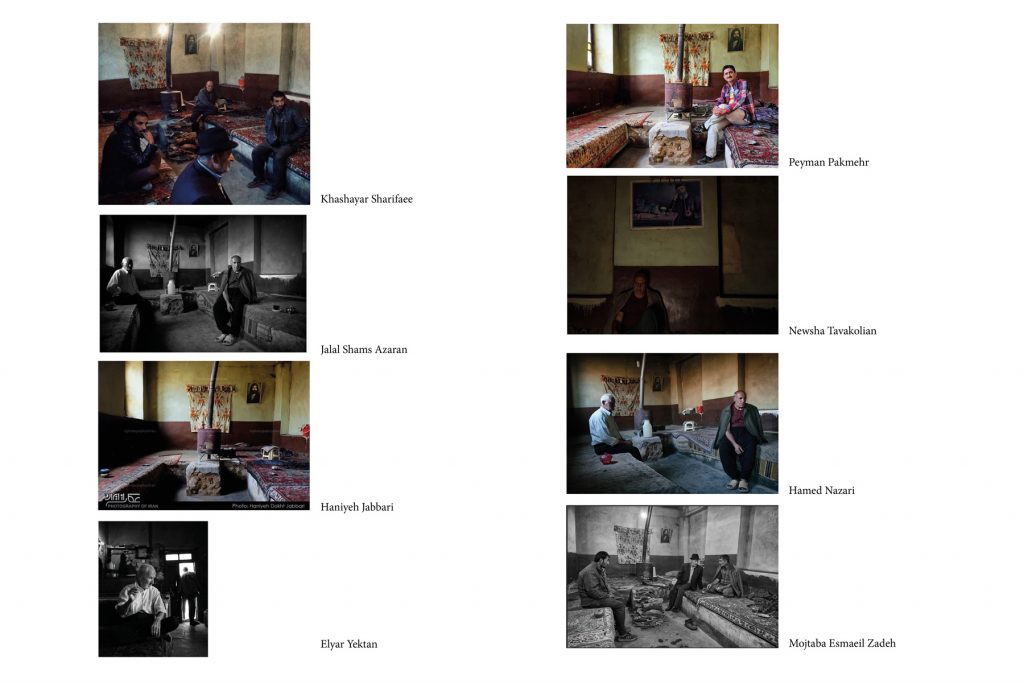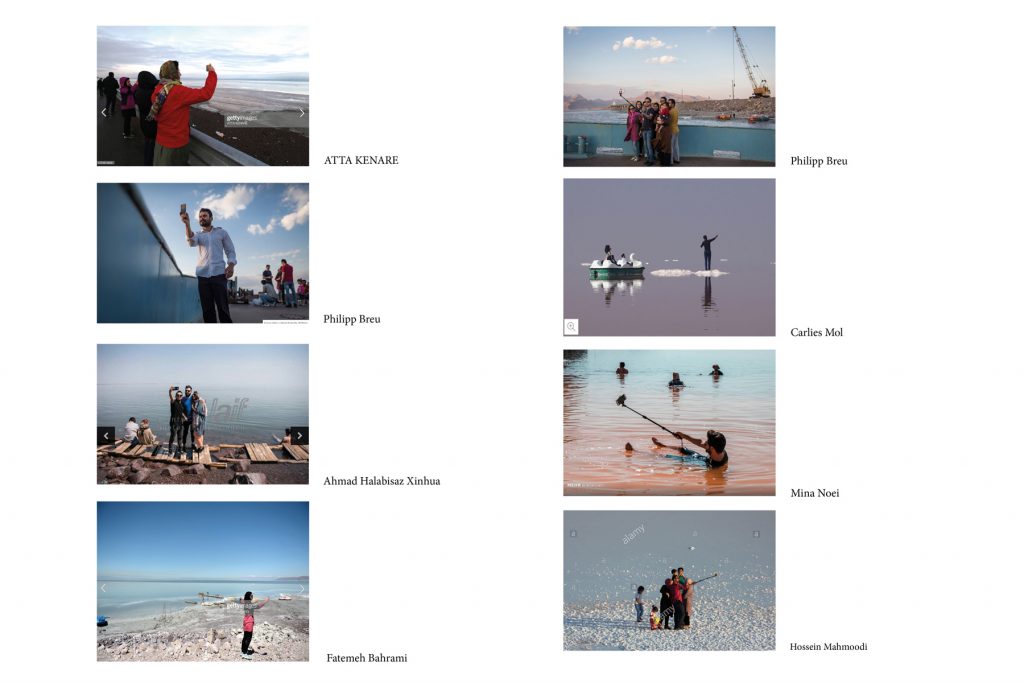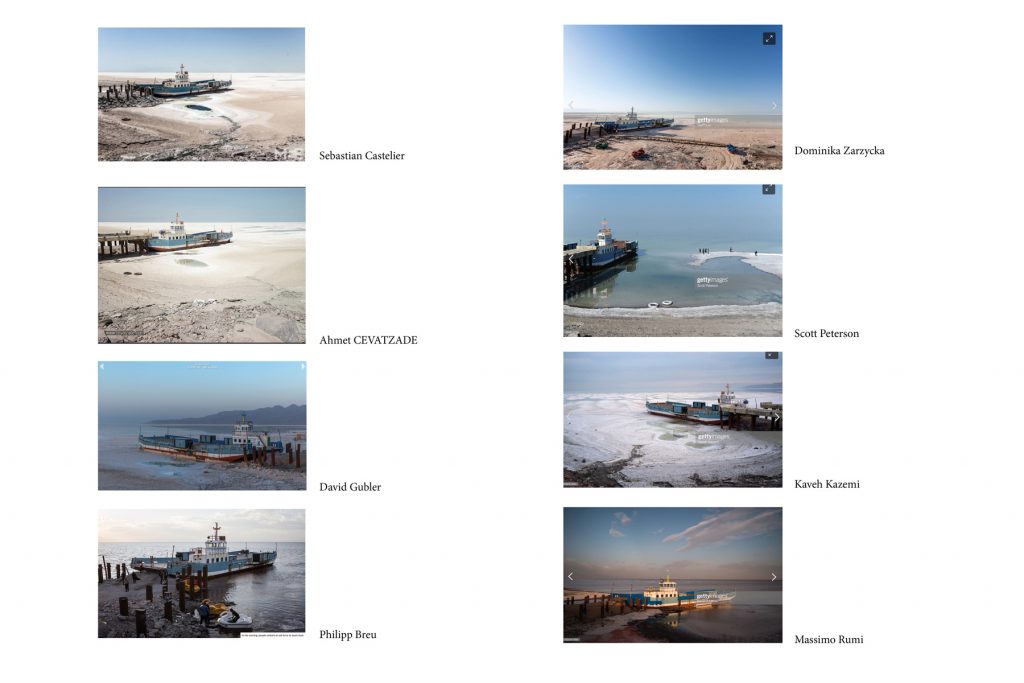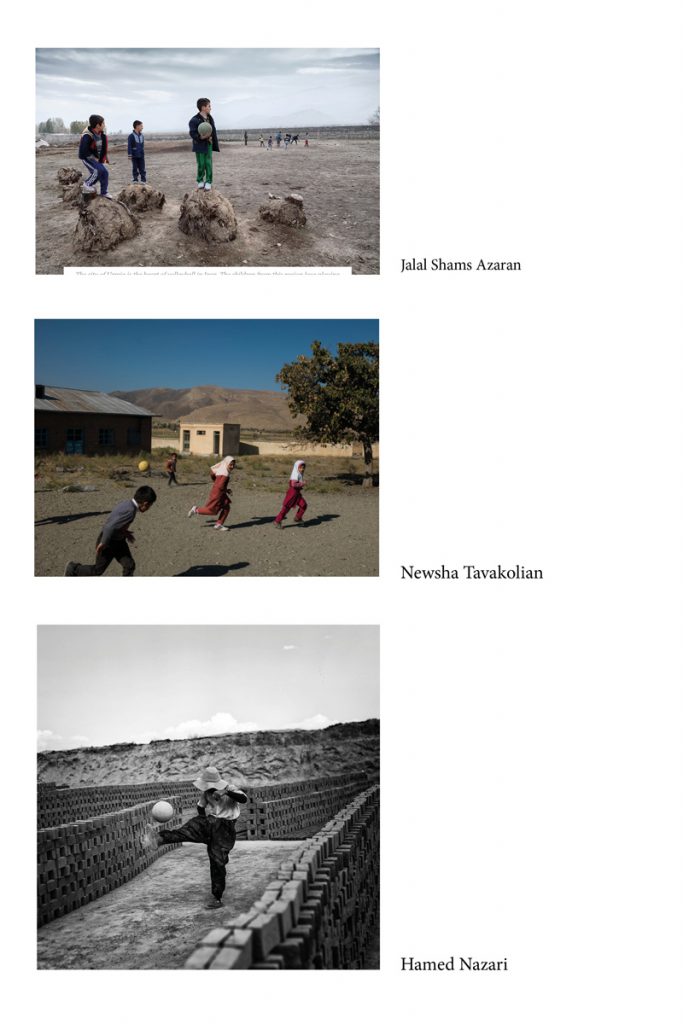The publication of the article “When Carbon Copies fade” on this blog has sparked many discussions in the photojournalism and documentary photography community. Maximilian Mann, the photographer whose work has been discussed in that article, has provided this statement along with publishing a large edit of the questioned project “Fading Flamingos” on his website.

The environmental disaster at Lake Urmia in Iran is a topic of global interest. Due to the scale and urgency of this issue, which is closely linked to climate change and agricultural practices, many scientists, documentary filmmakers and photographers, national and international, have set out in recent years to research and document the effects of the drying up of the salt lake. Numerous studies have been carried out, various photographic works and documentary films have been produced – many articles have been published.
I thoroughly researched my documentary project on Lake Urmia. During my research I also encountered the work of Solmaz Daryani along with other photographic works by Ebrahim Noroozi, Newsha Tavakolian, Hamed Nazari, Ali Hamed Haghdoust, Jalal Shams Azaran, Philipp Breu, Hossein Fatemi, Jalal Shamsazaran and Aletheia Casey.
Solmaz Daryani and I even met in person in November 2019 at the F2 Fotofestival in Dortmund, Germany where both of our works were exhibited. In Dortmund we had a friendly and collegial exchange about our respective works on Lake Urmia. I would be extremely happy to talk to Solmaz again. I contacted her more than a week ago, but unfortunately she hasn’t responded to my messages, yet. I hope we can have a direct conversation as soon as possible.
In my opinion it is urgently necessary that there are many different projects on the same topic, which document the developments, such as those of Lake Urmia. In order to work together on the dissemination of information, we need all perspectives. The early and the late, the local and the foreign. We need perspectives from every human being. Only in this way such an important topic can receive sufficient attention. I am aware that woman are underrepresented in the photo-industry. This is a huge problem we have to collectively work on!
I made three trips to Iran in order to work on my documentary project on Lake Urmia. I did not have an assignment, I worked independently. In total I spent eight weeks at the lake. During this time I visited countless places together with my local translator and fixer, Mahdi Zavvar. I took more than 11.000 pictures while I was there. My project is of course much broader and diverse than the ten pictures submitted for the World Press Photo Award. Here you can get an insight into my extensive work. In my opinion, viewing the complete piece reveals how diverse my project is.
I acknowledge that in the selection I submitted to World Press Photo, there are similarities to the work of Solmaz Daryani that cannot be dismissed. However, Solmaz’ project also consists of many other photographs. Part of her project, for example, consist of old family pictures that show her personal connection to the subject matter. I believe that Solmaz has found a wonderful, personal approach and I deeply respect her work. [1]
Just like me, Solmaz has access to the international market and to international photo awards. She is a respected colleague who has already worked internationally. Her work has been published in L’OBS Magazine [2], National Geographic [3] and Polka Magazine [4]. She has also been awarded a Magnum Foundation Grant for her work [5].
My work consists of a wide range of images and is very diverse. I strictly reject the accusation of plagiarism. I have never intentionally visited the same places as she did, or photographed similar moments, and I find it regrettable that the huge differences between our works are ignored. When you take a closer look at both works in their entirety, the differences become very clear.
I would like to address the similarities between my selection submitted to the World Press Photo Award and some of Solmaz’ images in detail:
I selected my work for the World Press Photo Award in terms of content. It was important to me to express the core elements of the story about the lake in these ten images.
-> This includes agriculture, of course. The high water consumption of agriculture, in addition to the effects of climate change, is causing water levels to fall. In order to take up this topic, I photographed on an apple plantation and in autumn farmers burning brushwood, the remnants of agriculture. Both scenes are not special events, but scenes of everyday life that can be seen and photographed in many places.
-> I photographed a scene in the tea house in Qalqachi. Qalqachi is one of the places my fixer showed me, where you can feel the dying of the villages especially well. The tea house is the only place, as far as I know, where the remaining population meets outside their homes. For me, the tea house has been a symbol for the dying of the villages. Besides me and Daryani some other photographers took pictures there. It is not a remote and unknown place. Every person you would ask in Qalqachi would show you this teahouse. Just like my fixer did.

-> There used to be more tourism at Lake Urmia. Today, tourism has collapsed. The tourists who still come take pictures of themselves with their smartphones in front of an environmental disaster. This is a bizarre fact, which I have included in my work. This scene is not unique either, you find it everywhere. Solmaz and I are not the only photographers who stumbled upon this fact and took pictures of it.

-> The former ferry at the Urmia Lake Bridge is one of the symbols for the catastrophe taking place around Lake Urmia. Every day hundreds of cars pass by here and the ship was photographed from all imaginable angles by various photographers but also by passers-by. It is, in a way, a local attraction and an often photographed motive. Everyone in the region knows this ship.

-> The lake turns into a salt desert. This is visible everywhere and a central point for the story. Not to visualize these aspects of the lake would have been negligent.

As a foreign documentary photographer, I am working closely with different local colleagues – I’m dependent on their knowledge and insight. A local translator and researcher (“Fixer”) showed me the area and the places relevant to my story (such as the ships, the villages threatened by extinction and the tea houses belonging to them, or even the agricultural activity).
Both Solmaz’ and my visual language could be described as clean and rather distanced. My visual language is even a little more distant than her’s. I show the whole scene rather than picking out details in the situations in the hope of photographing more complex images that are open for interpretation. The toning of the photographs in my work is low in contrast and rather desaturated. The choice of imagery and range of color was a decision that was adapted to the lighting that I encountered at Lake Urmia, I therefore find it appropriate for the subject matter. I am aware that this visual language is not unique. Anyone can and is allowed to take photographs in this way. My way of photographing is not plagiarizing, but can be found by many photographers.
My work was created under strict consideration of journalistic standards. I have not staged any pictures that are not marked as portraits in the captions. My captions are correct, I am committed to journalistic integrity and have approached the complexity of the subject from different points of view, both visually and in my research. My photographs conform to the strict rules of the World Press Photo Awards, which is committed to truthful and accurate reporting.
I find it very regrettable that this debate started without me – nobody asked me for a statement in advance. So the accusation of plagiarism that has been published online has so far been very simplistic and one-sided. I do not shy away from the discussion and I hope that this has made my working methods comprehensible. Once again I strongly reject the accusations of plagiarism.
Maximilian Mann, 11th March 2020
[1] http://www.solmazdaryani.com
[2] https://visura.co/daryani/stories/iran-wetlands-climate-change
[3] https://www.nationalgeographic.com/science/2020/02/afghan-struggles-to-rebuild-climate-change-complicates/
[5] https://www.magnumfoundation.org/projects/2019/7/17/solmaz-daryani-a-sacred-sullied-space
